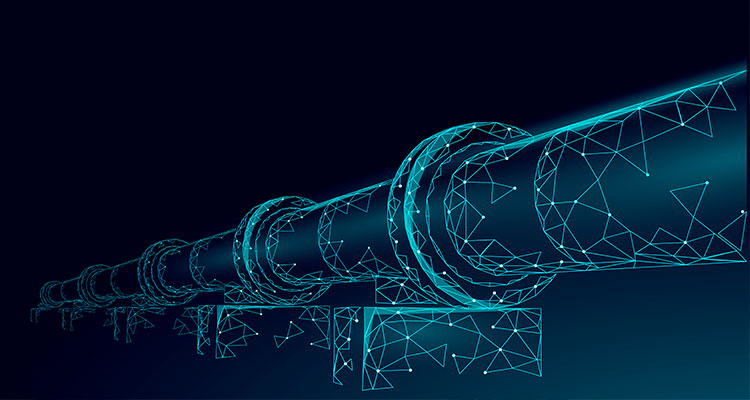
Tackling emerging threats to offshore energy infrastructure.
Offshore energy infrastructure – a complex network of pipelines, rigs, and subsea cables – is a critical piece of the world’s energy supply chain. These assets are essential for ensuring the continuous flow of energy resources across the globe, powering economies and daily life. But the security of these systems has been compromised, with incidents such as the Nord Stream pipeline sabotage and recent cables cut in the Baltic Sea highlighting escalating threats with the highest of stakes.
Though it is debated whether these incidents are deliberate acts or just accidents, in truth, regardless of the root cause, these instances highlight the vulnerability of offshore infrastructure and particularly energy assets, which are critical for the functionality of sovereign countries. But given the physical and logistical difficulties in safeguarding these systems, governments and private sector players alike must quickly identify the actions they can take to keep this infrastructure safe.
The emerging threat landscape
The 2022 Nord Stream incident took place when two gas lines in the Baltic Sea exploded, seemingly due to an intentional detonation, exposing the growing vulnerability of critical pipelines. Recurring cable disruptions more recently in the Baltic Sea and near Taiwan offer additional evidence of rising maritime threats.
Indeed, there are an average of over one hundred undersea cable faults annually, many in high-risk regions. While some of these are accidents, the increase in dark activity near these incident sites (where vessels switch off tracking signals to evade detection) is concerning.
For example, Shunxing 39, a Chinese-owned ship, was accused of damaging an undersea fiber-optic cable near Taiwan. Data from our company, Windward, found

that this vessel was transmitting as many as three different false identities. Transmitting false identities or locations are standard practice for maritime criminals to obscure their identity and proximity to a location or actor they do not want to be seen near.
The challenges of securing offshore infrastructure
Standard approaches to maritime security such as monitoring ships’ Automatic Identification System (AIS) signals, are insufficient on their own. These signals, which broadcast ships’ credentials, position, course, speed and other data, can easily be disabled or manipulated, as in the case of Shunxing 39.
Another challenge arises around the numerous players involved in protecting these critical assets. Governments play a key role, while energy companies face increasing pressure to invest in security and risk mitigation strategies. This creates a responsibility gap which can lead to an unproductive blame game – governments expect private companies to handle security, private entities assume the same of governments, and in the end, no one takes responsibility.
Compounding this confusion is that many offshore energy facilities lie in international waters, also known as Exclusive Economic Zones (EEZs), where jurisdiction becomes even more murky. EEZs exist to give countries certain rights over resource exploitation, but they ultimately don’t grant full sovereignty or law enforcement authority, making it difficult to take legal action against vessels suspected of interference or sabotage. Thus, in EEZs, security depends on voluntary multi-jurisdictional cooperation between maritime stakeholders, which unfortunately remains fragmented, inconsistent, and slow.
Strengthening resilience
The energy companies and governmental agencies responsible for maritime security must work together to implement robust monitoring mechanisms, establish a proactive security barrier, and to detect and respond to potential threats to undersea pipelines and offshore platforms in real time.
While government-led intelligence provides valuable insights into regional security risks, reliance on state authorities alone may leave energy operators exposed to blind spots in threat detection or enforcement. The private sector can support these efforts by investing in independent intelligence capabilities, such as proprietary maritime risk assessment tools, commercial satellite data, and private security partnerships.
As such, a dual-layered approach integrating both government resources and private intelligence will enhance situational awareness and provide a more comprehensive security framework. By sharing intelligence and resources, both benefit and enhance their collective ability to prevent and mitigate potential attacks and risks.
Coordinated efforts and cross-border cooperation are essential to address jurisdictional gaps, facilitate rapid responses to security incidents, and tackle maritime security challenges in a holistic manner. International organizations such as NATO and the European Maritime Safety Agency (EMSA) for example, can play a key role in establishing standardized security protocols to protect vital infrastructure – an increasingly critical consideration as offshore energy infrastructure becomes a new frontline of global conflict.
High stakes on the high seas
Energy infrastructure is among the most critical, high-stakes targets on the maritime battlefield, and energy companies, utilities providers, and policymakers must recognize the scale of this risk and take a proactive, collaborative approach. Failing to act today could lead to unnecessary catastrophes tomorrow. Indeed, an attack at the right (or wrong) time and place could plunge whole countries into darkness or cut off their communications – a worst-case scenario for any nation.
Ami Daniel
Ami Daniel is CEO and Co-Founder of Windward, the leading Maritime AI™ company, providing an all-in-one platform to accelerate global trade. Windward’s AI-powered decision support and exception management platform, enhanced with Generative AI, offers a 360° view of the maritime ecosystem and enables stakeholders to make real time, predictive intelligence-driven decisions to achieve business and operational readiness. The company’s clients range from energy supermajors, shipowners, mining companies, freight forwarders, and port authorities, to banks, insurers, and governmental organizations.